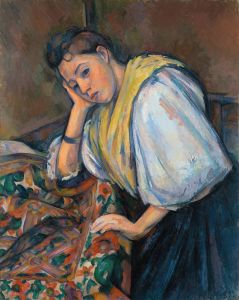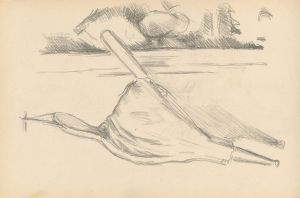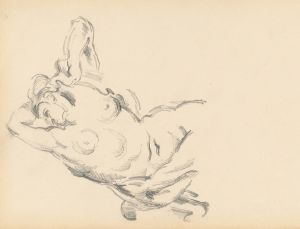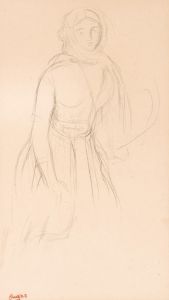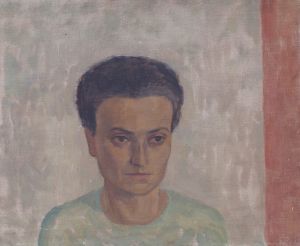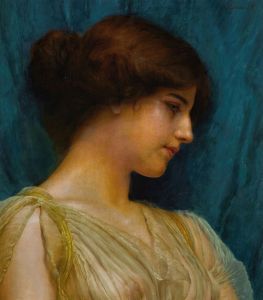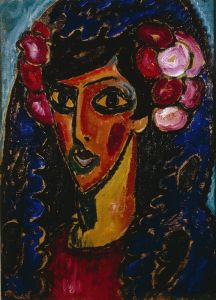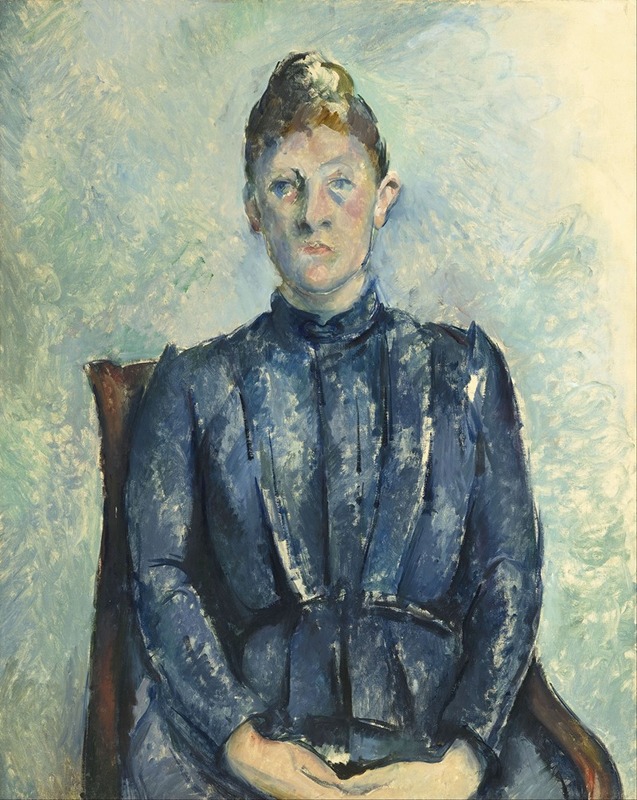
Portrait of Madame Cézanne
A hand-painted replica of Paul Cézanne’s masterpiece Portrait of Madame Cézanne, meticulously crafted by professional artists to capture the true essence of the original. Each piece is created with museum-quality canvas and rare mineral pigments, carefully painted by experienced artists with delicate brushstrokes and rich, layered colors to perfectly recreate the texture of the original artwork. Unlike machine-printed reproductions, this hand-painted version brings the painting to life, infused with the artist’s emotions and skill in every stroke. Whether for personal collection or home decoration, it instantly elevates the artistic atmosphere of any space.
Paul Cézanne's Portrait of Madame Cézanne is a series of oil paintings created by the French Post-Impressionist artist Paul Cézanne, depicting his wife, Marie-Hortense Fiquet. Cézanne painted multiple portraits of Hortense over the course of their relationship, with the series including approximately 29 known works. These portraits are considered significant examples of Cézanne's evolving style and his approach to portraiture, which emphasized structure, form, and the interplay of color over traditional representational accuracy.
Marie-Hortense Fiquet, a former bookbinder, met Cézanne in the early 1860s, and the two began a long-term relationship. They married in 1886, after living together for many years and having a son, Paul. Hortense was a frequent subject in Cézanne's work, and her portraits reflect the artist's interest in capturing the essence of his subjects through his distinctive use of brushstrokes and color modulation. Despite their personal relationship, Cézanne's depictions of Hortense are often described as emotionally distant, focusing more on formal composition than on conveying her personality or mood.
The Portrait of Madame Cézanne series is notable for its exploration of Cézanne's artistic principles. He often painted Hortense in a seated pose, with a calm and composed expression, against simple, muted backgrounds. This allowed him to concentrate on the geometric structure of the figure and the spatial relationships within the composition. Cézanne's use of color and light in these works demonstrates his departure from the Impressionist style, as he sought to create a more solid and enduring representation of his subjects.
One of the most famous works in this series is Madame Cézanne in a Red Armchair (circa 1877), which is housed in the Museum of Fine Arts, Boston. In this painting, Hortense is depicted seated in a red upholstered chair, wearing a patterned dress. The composition is characterized by Cézanne's careful balance of color and form, with the red of the chair contrasting with the cooler tones of Hortense's dress and the background. The painting exemplifies Cézanne's ability to create depth and volume through his innovative use of color and brushwork.
The Portrait of Madame Cézanne series has been widely studied and celebrated for its contribution to the development of modern art. Cézanne's approach to portraiture, with its emphasis on structure and abstraction, influenced later artists such as Pablo Picasso and Henri Matisse, who regarded him as a pivotal figure in the transition from 19th-century artistic traditions to the innovations of the 20th century.
Today, individual works from the series are held in major museum collections around the world, including the Museum of Fine Arts, Boston; the Metropolitan Museum of Art in New York; and the Musée d'Orsay in Paris. These paintings continue to be appreciated for their artistic significance and for their role in shaping the trajectory of modern art.






